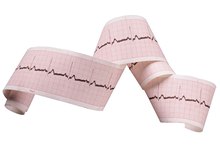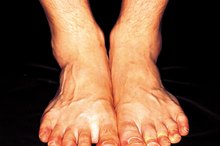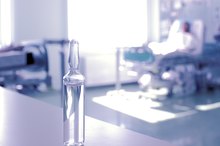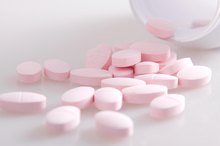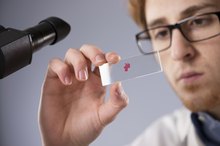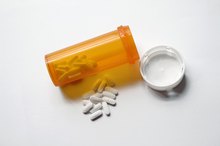What does fact checked mean?
At Healthfully, we strive to deliver objective content that is accurate and up-to-date. Our team periodically reviews articles in order to ensure content quality. The sources cited below consist of evidence from peer-reviewed journals, prominent medical organizations, academic associations, and government data.
- Linus Pauling Institute; Potassium; Jane Higdon, Ph.D.; February 2004
- National Institutes of Health Office of Dietary Supplements: Magnesium
The information contained on this site is for informational purposes only, and should not be used as a substitute for the advice of a professional health care provider. Please check with the appropriate physician regarding health questions and concerns. Although we strive to deliver accurate and up-to-date information, no guarantee to that effect is made.
Essential Electrolytes and Tremors
The Cleveland Clinic defines a tremor as a rhythmic, involuntary, oscillating movement of a body part that occurs in isolation or as part of a clinical syndrome 2. There are several types of tremors, and many diseases and conditions can cause them. If you experience a tremor in the absence of a known disease, your doctor can perform laboratory tests to determine the presence of a systemic problem such as hyperthyroidism -- a condition of high levels of thyroid hormone -- or electrolyte imbalance.
Electrolytes
The human body requires specific vitamins and minerals to function. Doctors refer to these nutrients as essential nutrients since they are required for life. Electrolytes help balance the level of fluid inside and outside of cells and transmit electrical impulses between nerves and cells. This makes electrolytes important for a healthy nervous system. An electrolyte imbalance can interfere with the electrical impulses sent between nerves and muscle cells and cause a tremor.
- The human body requires specific vitamins and minerals to function.
- An electrolyte imbalance can interfere with the electrical impulses sent between nerves and muscle cells and cause a tremor.
Calcium
Heart Arrhythmia: Iodine or Magnesium?
Learn More
Your body uses the majority, approximately 99 percent, of the calcium to build strong bones and teeth. The remaining 1 percent that stays in the blood and soft tissues plays a vital role in muscle contraction. A specialized structure within muscle cells, known as the sarcoplasmic reticulum, stores calcium ions. When nerves send electrical impulses to that cell, calcium flows out of the sarcoplasmic reticulum into the fluid portion of the cell. This movement triggers the muscle cells to contract. A low blood calcium level, known as hypocalcemia, causes tremorlike symptoms including tetany -- repetitive muscle twitching and convulsions and facial muscle spasms that can lead to seizures.
- Your body uses the majority, approximately 99 percent, of the calcium to build strong bones and teeth.
- When nerves send electrical impulses to that cell, calcium flows out of the sarcoplasmic reticulum into the fluid portion of the cell.
Potassium and Sodium
The two essential electrolytes potassium and sodium work together to balance the level of fluid inside and outside of cells. Most of the potassium ions reside inside of cells, while most sodium remains in the fluid surrounding cells. These two electrolytes form an electrical gradient that transmits nerve signals between cells and a chemical gradient that allows ions to move in and out of the cells. A low potassium level, a medical condition known as hypokalemia, interferes with normal muscle contraction and causes muscle weakness and spasms that can resemble a tremor.
- The two essential electrolytes potassium and sodium work together to balance the level of fluid inside and outside of cells.
- These two electrolytes form an electrical gradient that transmits nerve signals between cells and a chemical gradient that allows ions to move in and out of the cells.
Magnesium
Does Sodium and Potassium Imbalance Lead to Swollen Ankles?
Learn More
Your body uses approximately half of the magnesium to build strong bones and teeth. Of the other half, most is found inside of cells. Magnesium stays in the fluid portion of the cell. When muscle cells respond to nerve electrical impulses and release the calcium into the fluid portion of the cell, the magnesium ions produce a small electrical charge that propels the calcium back into the specialized structure of the cell. In doing this, magnesium triggers the cell to relax and get ready for the next contraction. A magnesium deficiency causes numbness and tingling, especially in the hands and feet, sporadic muscle contractions, tremor and seizures.
- Your body uses approximately half of the magnesium to build strong bones and teeth.
- When muscle cells respond to nerve electrical impulses and release the calcium into the fluid portion of the cell, the magnesium ions produce a small electrical charge that propels the calcium back into the specialized structure of the cell.
Related Articles
References
Writer Bio
Stephanie Chandler is a freelance writer whose master's degree in biomedical science and over 15 years experience in the scientific and pharmaceutical professions provide her with the knowledge to contribute to health topics. Chandler has been writing for corporations and small businesses since 1991. In addition to writing scientific papers and procedures, her articles are published on Overstock.com and other websites.
